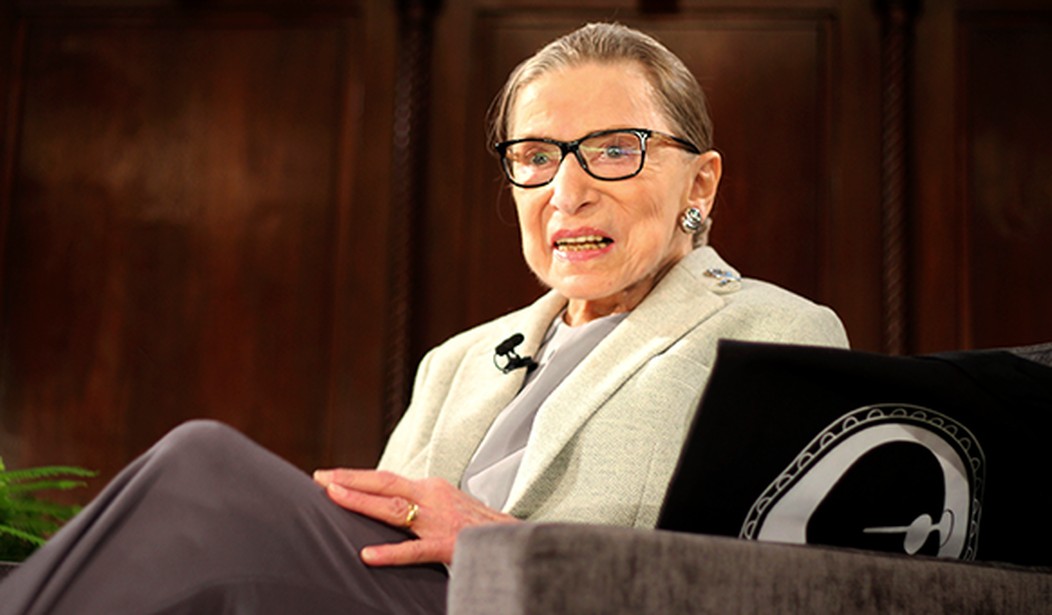The only question for Roe v. Wade was when it would be overturned, not if.
Whatever your position on abortion is, Roe v. Wade is objectively bad law built upon fetid ground. With the shameful release of an early draft of an upcoming Supreme Court decision with Dobbs v. Jackson, we now know Roe will be overturned. Many on the left are freaking out over this decision, with much fearmongering coming from the media. However, the journalistic and political class is not telling people, as understood by liberal jurists like Ruth Bader Ginsburg, that Roe was always weak law destined for the scrap heap of history.
Penumbras:
Roe v. Wade is the 1973 Supreme Court decision that made abortion legal and available by demand in the United States. The case came about after Norma L. McCorvey – Jane Roe was her alias – sued the state of Texas for stopping her from aborting her third child. Under Texas law, abortions could only happen in cases of rape, incest, or the life of the mother. The case eventually ended up in front of the US Supreme Court, which ruled in a shocking 7-2 decision, the majority opinion written by Judge Harry A. Blackmun, that the regulations on abortion were unconstitutional and that Roe’s right to privacy had been violated.
Here we find the first major flaw in Roe. Blackmun didn't just rule that the regulations were unconstitutional and leave it at that. He then created a new right to privacy out of whole cloth based on unspecified language while referring to the First, Fourth, Ninth, and 14th amendments. He used the standard created in the previous abortion case Griswold v. Connecticut, the dreaded so-called 'penumbras,' which means basing a constitutional right not on the text of the Constitution but on reasoning with general themes. This is a fatal flaw; American law is textual or basing law on what is written down. Putting the right to have an abortion in a fictitious "privacy zone" meant Roe got fated for big problems in its future.
Recommended
I'm not saying this as a pro-life libertarian. Progressive activists and jurists have written at length about this weakness since the decision was made. Chiefly among them is progressive darling, SCOTUS Justice Ruth Bader Ginsburg -or RBG, RIP- who believed Roe should have been built upon the equal protection clause of the 14th amendment instead of the fictitious one it was constructed upon. Ginsburg warned emphatically in a 1992 lecture that Roe “doctrinal limbs too swiftly shaped, (as) experience teaches, may prove unstable.”
Trimesters & Silly Things:
Putting aside the constitutional fraud inherent to Roe, the mechanisms used to determine the legality of abortion regulations in the decision were themselves broken beyond repair. Blackmun created the Trimester Rule, where regulating abortion for the first trimester was always okay, sometimes allowable for the second, and the third almost always prohibited. This mechanism was constitutionally indefensible, and in 1992 in Planned Parenthood v. Casey, SCOTUS tried to fix the problem by implementing the viability standard, meaning determining the limits on abortion regulations based on the earliest point a baby can be born and yet live.
In 1992 the viability standard was 24 weeks, the earliest average expectation then possible in the 1990s. Nevertheless, the Supreme Court said that this standard would change as medical technology improves. Today's viability is 21 weeks, a mountain of difference, and will continue to shrink over time. Meaning the right to an abortion is standing upon an ever-melting ice floe.
Roe came about from the lack of options for an unwanted child. Still, today there are myriad easier paths, including the Plan-B pill and Safe-Haven laws.
A Bottomless Pit:
When the Supreme Court supported Roe, it put the institution on a fatal political trajectory toward the iceberg that is the abortion issue. The US judicial branch should be independent and unaffected by popular opinion. Roe changed this, and not for the better.
Chief Justice Rehnquist warned that making the courts subject to popular opinion was a dangerous mistake that could destroy the institution: “Once the Court starts looking to the currents of public opinion regarding a particular judgment, it enters a truly bottomless pit from which there is simply no extracting itself.”
Or live by the sword, die by the sword. Roe and Casey were political judgments and thus subject to future political pressure when the winds of public opinion changed.
All the serious people, those in law, the media, universities, and politicians, have always understood that Roe was incredibly fragile. The only thing protecting it was their incessant threats and Stare De Crisis - “let the decision stand”- meaning the court's hesitancy to overturn historical precedence.
As Alito points out in Dobbs, US history is far more condemning of abortion than supportive. Therefore, the media and political class fought as hard as they have for the last five decades; because if an ounce of pressure to support Roe were removed, then the whole stack of cards, that is, the right to abortion, would come crashing down.
The Beginning:
Ending Roe doesn't mean the end to the abortion question but a new beginning. Returning the issue to the states just as the Founders designed.
While I find abortion reprehensible in most cases, Democrats have little to fear over the change. As Reason reporter Jacob Sullum laid out in a recent article, removing Roe and enabling more abortion regulations will only lead to slight decreases in the number of abortions in the US. Abortion by telemedicine now accounts for 2/5th of all and will only increase. In blue states like New York, the removal of Roe will mean more access to abortion, not less.
For some, what will change is the access to late-stage abortion, a reprehensible practice primarily targeted at black families, just as Planned Parenthood founder Margaret Sanger always hoped.
However, for most women seeking out an abortion, accessing it in some form will remain available post Dobbs. This means friends, stop panicking and start persuading. The battle to determine abortion has only just begun.
























Join the conversation as a VIP Member